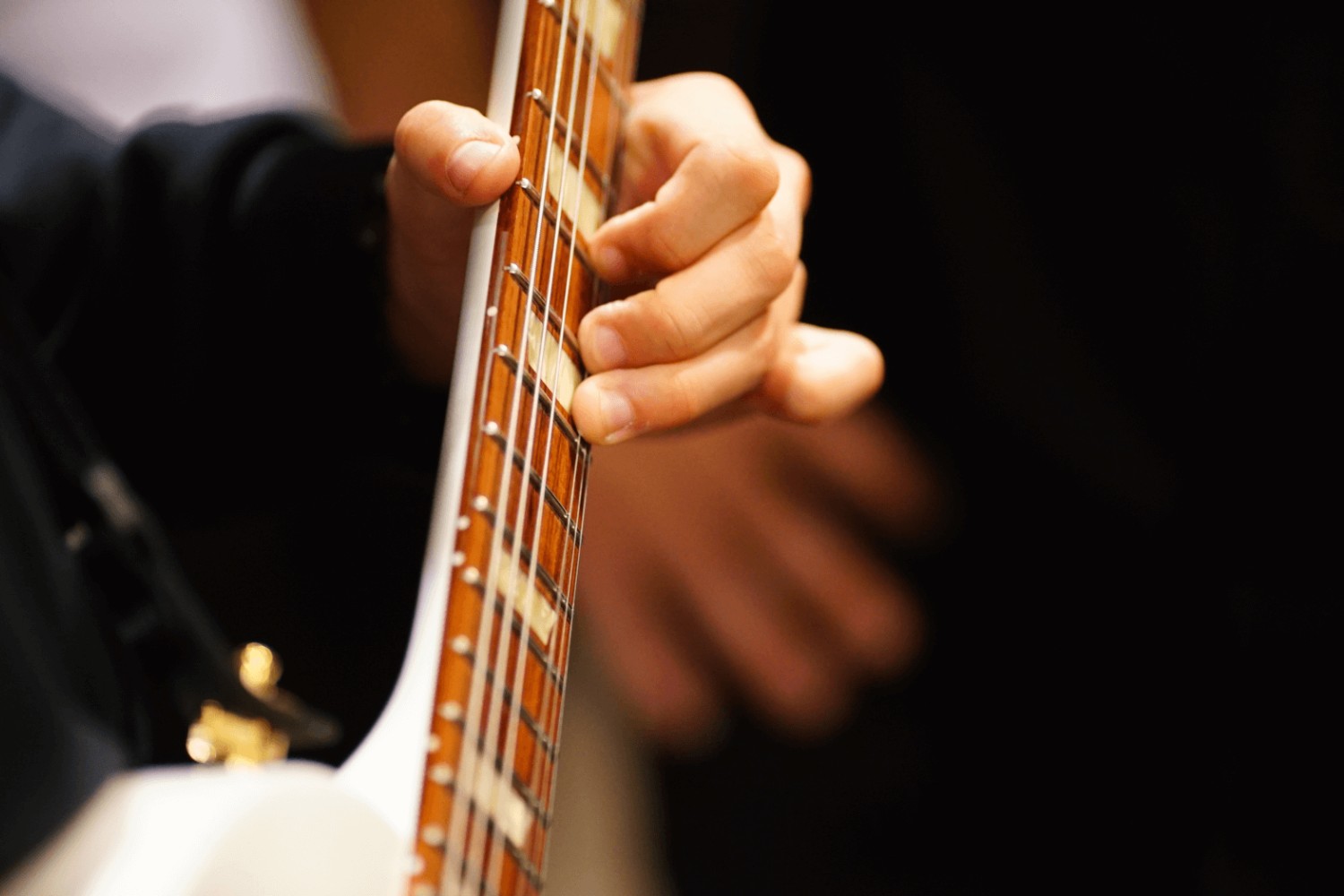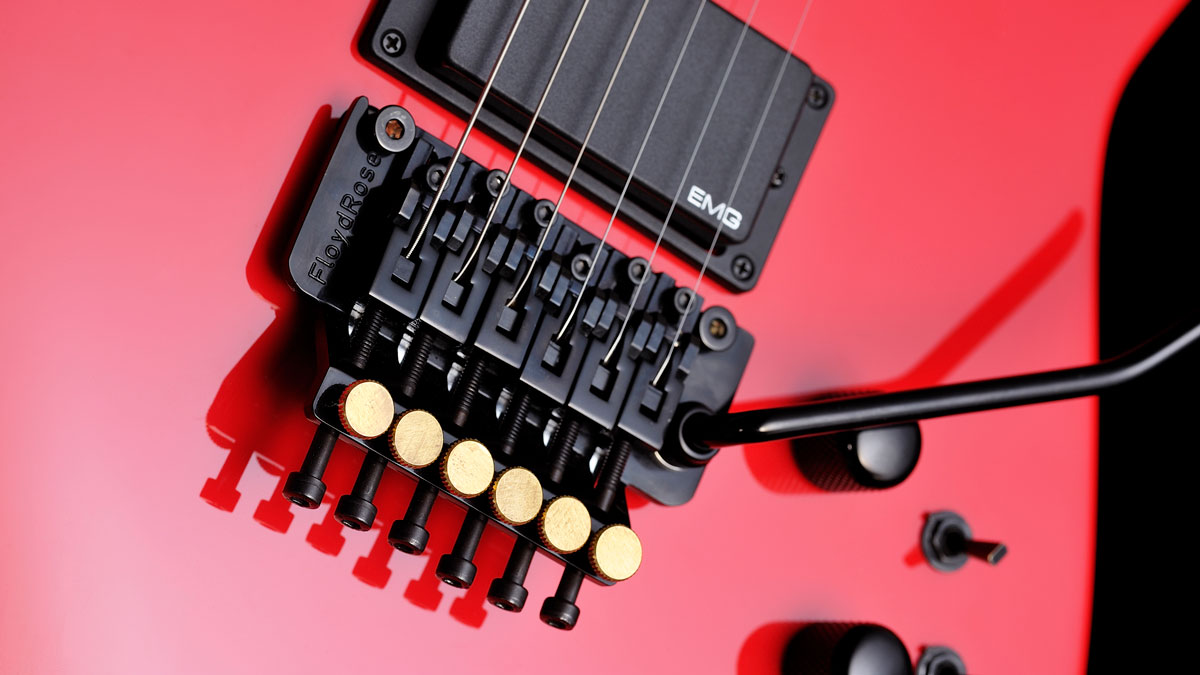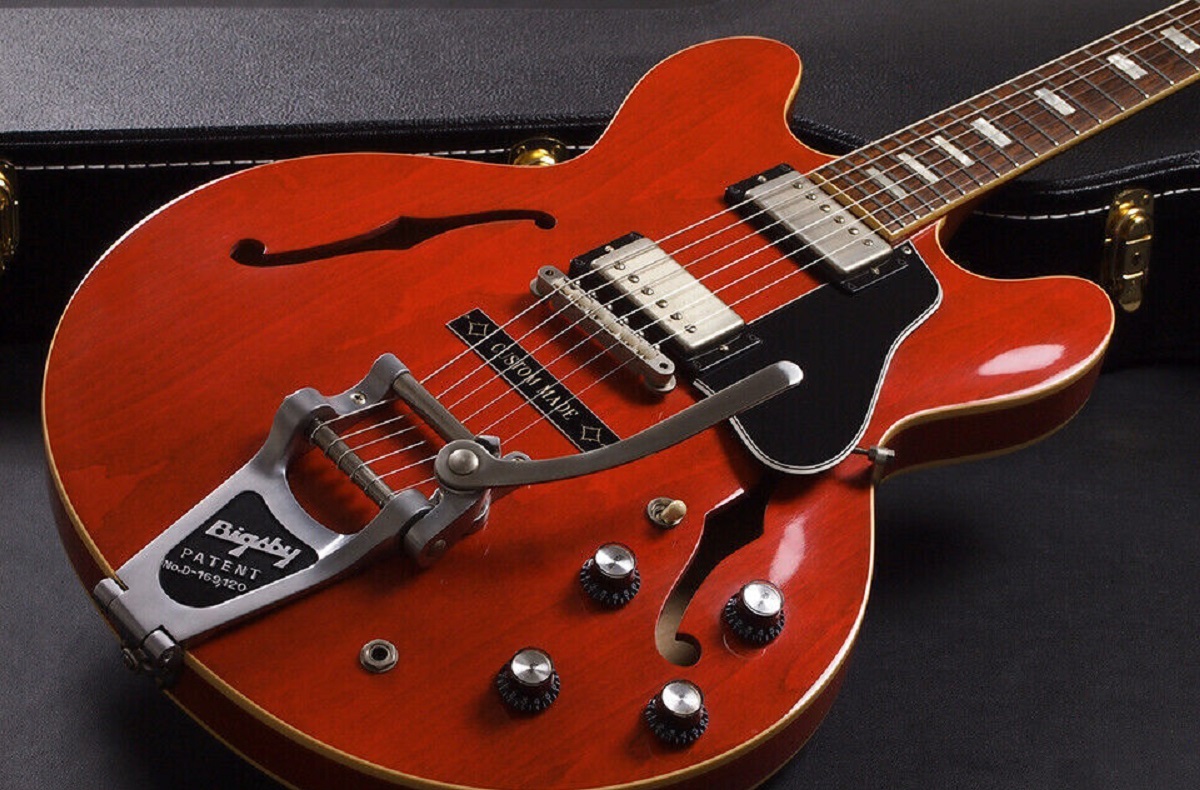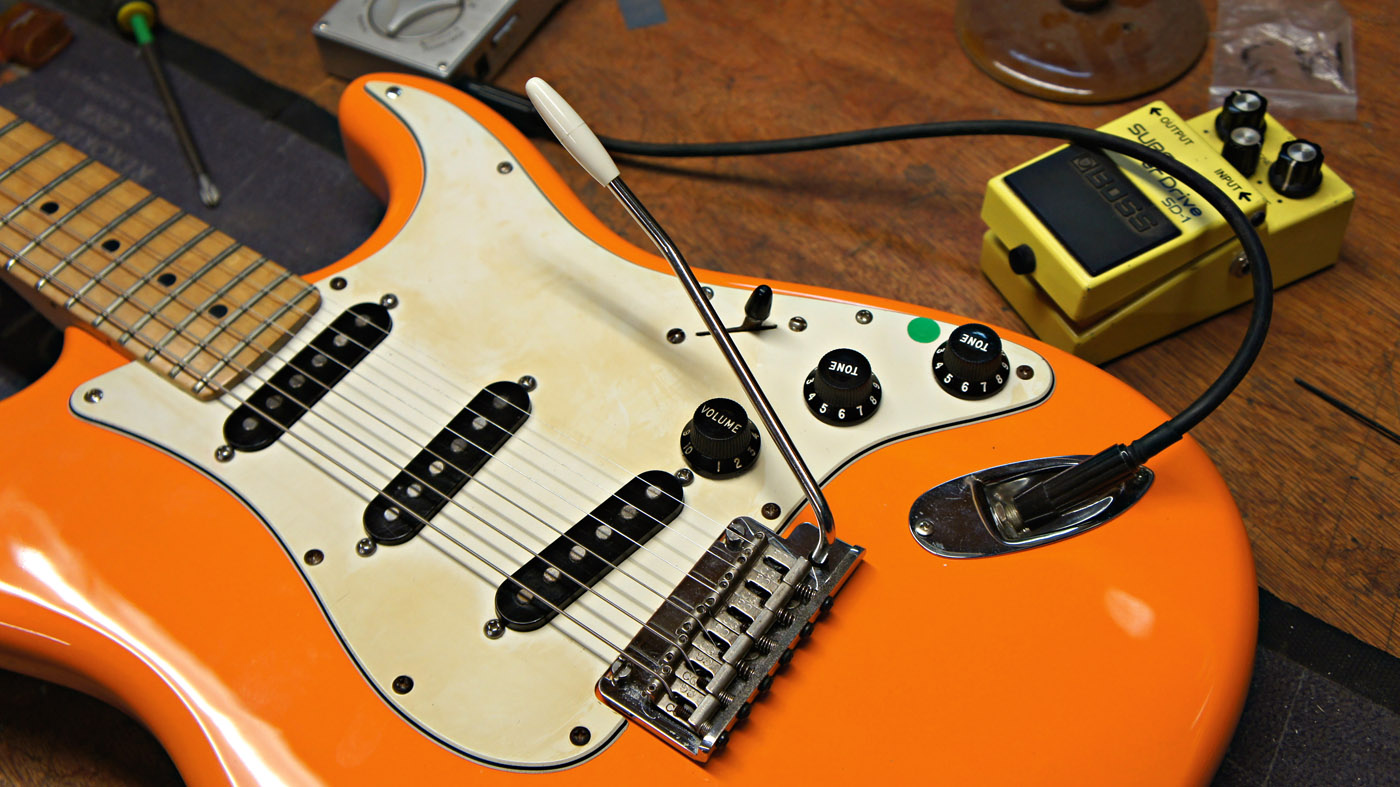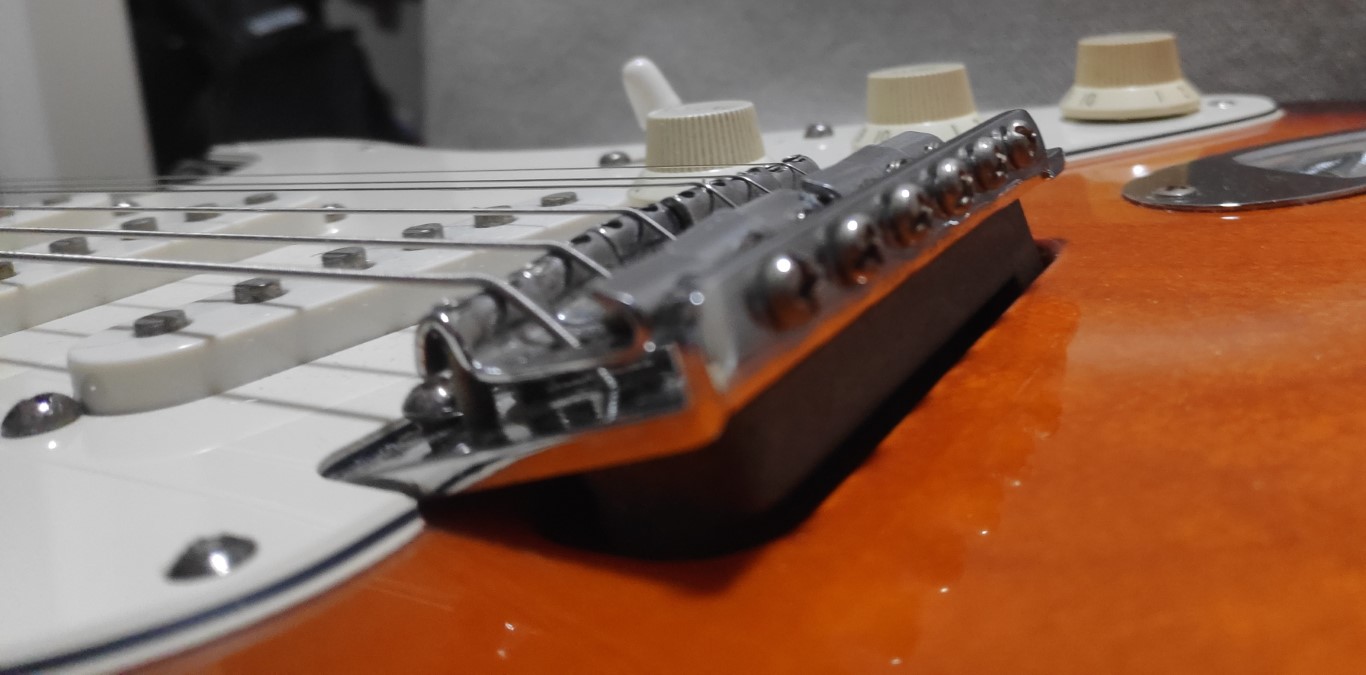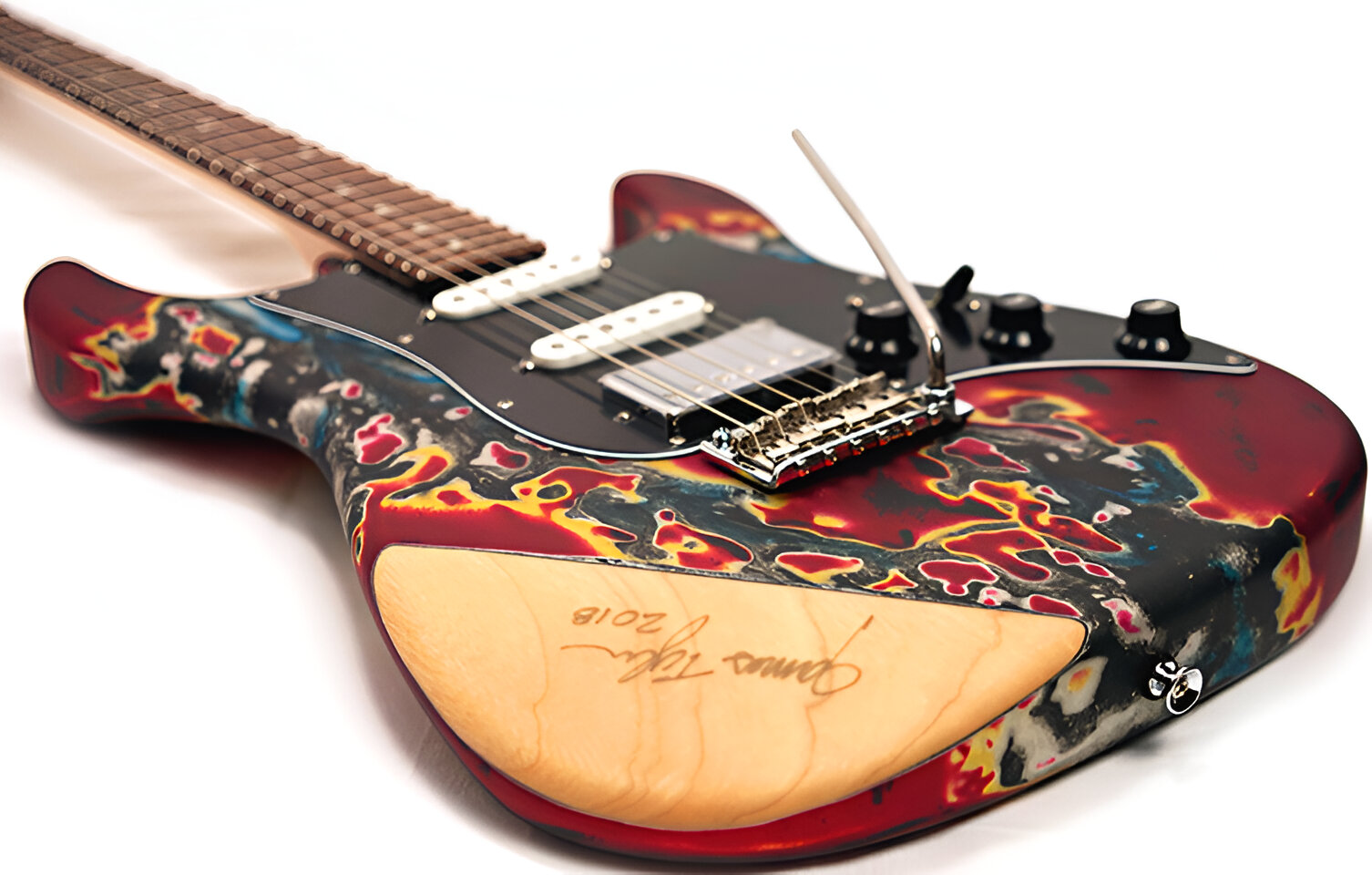Introduction
The tremolo bar, also known as a whammy bar or vibrato arm, is a vital component of an electric guitar that allows players to manipulate the pitch of notes and create unique sonic effects. Its introduction revolutionized the world of guitar playing, enabling musicians to add depth, expressiveness, and creativity to their performances. Understanding the functionality and versatility of this device is crucial for any guitarist looking to expand their sonic repertoire and explore new musical horizons.
The tremolo bar has become an iconic symbol of rock and roll, synonymous with the expressive and dynamic playing styles of legendary guitarists. From subtle vibrato to dramatic pitch dives and soaring, ethereal sounds, the tremolo bar empowers players to infuse their music with emotion and intensity. As such, it has earned a revered status among musicians and enthusiasts alike, serving as a gateway to boundless sonic experimentation and artistic innovation.
In this comprehensive guide, we will delve into the inner workings of the tremolo bar, exploring its various types, applications, and the advantages and challenges it presents to guitarists. Furthermore, we will provide valuable tips and insights to help players harness the full potential of the tremolo bar, elevating their musical performances to new heights. Whether you are a seasoned guitarist or an aspiring enthusiast, this exploration of the tremolo bar will equip you with the knowledge and inspiration to unlock its transformative power and infuse your music with unparalleled expressiveness and creativity.
What Is a Tremolo Bar?
A tremolo bar is a lever attached to the bridge or tailpiece of an electric guitar that allows the player to manipulate the tension of the strings, thereby altering the pitch of the notes. When the tremolo bar is engaged, it enables the guitarist to create subtle vibrato, rapid pitch fluctuations, or even extreme dive bombs, adding a dynamic and expressive dimension to their playing. The tremolo bar’s versatility makes it an indispensable tool for shaping the sonic character of the electric guitar, offering a wide range of tonal possibilities that enhance musical performances across various genres.
Typically, the tremolo bar is designed to pivot within the bridge or tailpiece, allowing the player to push or pull it to modulate the pitch of the strings. As the tension on the strings changes, the pitch of the notes produced by the guitar also shifts, resulting in the characteristic tremolo effect. This mechanism provides guitarists with the ability to introduce nuanced variations in pitch, infusing their playing with emotive and expressive qualities that captivate listeners and elevate their musical expression.
It’s important to note that the term “tremolo” in the context of the tremolo bar is a misnomer, as the device actually produces vibrato—the modulation of pitch—rather than tremolo, which refers to the modulation of volume. Despite this semantic discrepancy, the tremolo bar has been universally recognized and referred to as such, cementing its identity as an essential feature of the electric guitar’s sonic arsenal.
How Does a Tremolo Bar Work?
The functionality of a tremolo bar lies in its ability to alter the tension of the guitar strings, thereby affecting the pitch of the notes produced. When the tremolo bar is manipulated, it pivots within the bridge or tailpiece, causing the tension on the strings to change. This change in tension results in a corresponding modulation of pitch, allowing the guitarist to create expressive vibrato, rapid pitch fluctuations, or dramatic pitch dives, depending on the extent of the bar’s movement.
Upon pushing or pulling the tremolo bar, the strings experience a temporary change in tension, causing the pitch of the notes to fluctuate. This dynamic alteration in pitch adds a rich, organic quality to the sound, imbuing the music with a sense of movement and emotion. Furthermore, the tremolo bar’s responsiveness to the player’s touch enables precise control over the degree and speed of pitch modulation, allowing for nuanced and expressive performances.
At a mechanical level, the tremolo bar interacts with the guitar’s bridge or tailpiece, which is designed to accommodate its movement. The bridge or tailpiece serves as the anchor point for the strings and facilitates the transmission of the tension changes induced by the tremolo bar, translating them into audible pitch variations. This harmonious interplay between the tremolo bar and the guitar’s hardware enables the seamless execution of pitch modulation, empowering the guitarist to craft a diverse range of tonal textures and effects.
Different Types of Tremolo Systems
Several distinct tremolo systems have emerged over the years, each offering unique features and capabilities that cater to the diverse preferences and playing styles of guitarists. Understanding the characteristics and functionality of these tremolo systems is essential for selecting the most suitable option based on individual musical requirements and performance preferences.
1. Vintage Synchronized Tremolo: This classic tremolo system, popularized by Fender Stratocaster guitars, features a floating bridge with a tremolo unit that allows both downward and upward pitch movement. Its smooth operation and iconic sound have made it a staple in the world of electric guitar playing, offering a wide range of expressive possibilities through subtle vibrato and more pronounced pitch manipulations.
2. Locking Tremolo (Double-Locking Tremolo): This innovative system, exemplified by the Floyd Rose tremolo, incorporates locking nuts at the headstock and fine-tuners at the bridge to ensure tuning stability, even during aggressive tremolo use. The double-locking mechanism secures the strings at both ends of the guitar, minimizing the impact of string tension changes on tuning, making it ideal for intense tremolo bar techniques, such as dive bombs and extreme pitch fluctuations.
3. Floating Tremolo: Characterized by its ability to move in both directions, the floating tremolo system, as seen in the Fender Jazzmaster and Jaguar guitars, offers a smooth and responsive tremolo experience. Its floating design allows for subtle pitch variations and shimmering vibrato, adding a touch of elegance and expressiveness to the guitar’s sonic palette.
4. Tremolo Tailpiece: Found on guitars such as the Gibson SG and Les Paul, the tremolo tailpiece, also known as a “Bigsby,” provides a unique tremolo experience characterized by its smooth and fluid operation. Its distinctive design imparts a vintage, tactile feel to tremolo usage, making it well-suited for nuanced pitch manipulations and stylistic embellishments.
5. Strat-Style Two-Point Tremolo: This modernized take on the vintage synchronized tremolo, featured in contemporary Stratocaster models, incorporates a two-point pivot system for enhanced stability and smooth tremolo action. Its refined design offers improved tuning stability and precise tremolo control, making it an appealing choice for players seeking a balance between traditional tremolo aesthetics and modern performance attributes.
Each tremolo system presents a distinct set of advantages and considerations, influencing the tonal characteristics, tuning stability, and expressive capabilities of the guitar. By exploring the diverse array of tremolo systems available, guitarists can tailor their instrument to match their playing style and sonic aspirations, unlocking a world of creative possibilities and expressive potential.
Pros and Cons of Using a Tremolo Bar
Utilizing a tremolo bar offers guitarists a myriad of expressive possibilities, but it also presents certain challenges and considerations that warrant careful evaluation. By weighing the pros and cons of incorporating a tremolo bar into their playing, musicians can make informed decisions regarding its integration into their musical repertoire.
Pros:
– Expressive Pitch Modulation: The tremolo bar enables players to infuse their music with expressive vibrato, rapid pitch fluctuations, and dramatic dive bombs, adding emotive depth and dynamic character to their performances.
– Creative Sonic Effects: From shimmering, ethereal textures to aggressive and intense pitch manipulations, the tremolo bar empowers guitarists to explore a wide spectrum of sonic effects, fostering creativity and innovation in their playing.
– Dynamic Performance: By incorporating tremolo techniques, guitarists can imbue their music with dynamic swells, subtle nuances, and dramatic flourishes, enhancing the overall expressiveness and impact of their performances.
Cons:
- Tuning Instability: Intense tremolo bar usage can exert significant tension changes on the strings, potentially leading to tuning instability, necessitating frequent retuning during and after tremolo-heavy passages.
- Setup and Maintenance: Different tremolo systems require specific setup and maintenance procedures to ensure optimal performance, making it essential for guitarists to invest time and effort in understanding and maintaining their tremolo-equipped instruments.
- Learning Curve: Mastering tremolo techniques and achieving precise control over pitch modulation demands dedicated practice and familiarity with the nuances of the tremolo bar, posing a learning curve for players seeking to incorporate it effectively into their playing.
Navigating the pros and cons of using a tremolo bar involves striking a balance between its expressive potential and the technical considerations associated with its usage. By embracing its creative possibilities while addressing its inherent challenges, guitarists can harness the tremolo bar as a versatile tool for shaping their musical identity and enriching their artistic expression.
Tips for Using a Tremolo Bar
Mastering the art of utilizing a tremolo bar involves honing both technical proficiency and creative expression. By incorporating the following tips into their practice and performance, guitarists can enhance their command over the tremolo bar and unlock its full potential as a versatile tool for musical expression.
1. Maintain Optimal String Tension: Regularly check and adjust the string tension to ensure that the tremolo system operates smoothly and responsively. Proper string tension is crucial for achieving precise pitch modulation and preventing tuning instability during tremolo usage.
2. Explore Gradual Vibrato Techniques: Experiment with subtle and gradual vibrato techniques by gently manipulating the tremolo bar to introduce nuanced pitch variations. This approach allows for expressive and emotive playing, adding depth and character to sustained notes and melodies.
3. Secure Tuning Stability: Implement locking tuners or locking nuts to enhance tuning stability, especially when using the tremolo bar for aggressive pitch manipulations. This minimizes the impact of string tension changes on tuning, ensuring consistent pitch accuracy during and after tremolo usage.
4. Practice Control and Precision: Devote focused practice sessions to develop precise control over the tremolo bar, gradually mastering the nuances of pitch modulation and tremolo techniques. Cultivating a delicate touch and refined control empowers guitarists to execute expressive and dynamic tremolo passages with confidence.
5. Experiment with Diverse Genres: Embrace the versatility of the tremolo bar by exploring its applications across various musical genres. From blues and rock to ambient and experimental styles, integrating tremolo techniques into diverse musical contexts fosters creativity and expands the sonic palette of the guitar.
6. Learn Maintenance and Adjustment: Familiarize yourself with the specific maintenance and adjustment requirements of your guitar’s tremolo system. Understanding the intricacies of setup, lubrication, and fine-tuning ensures optimal performance and longevity of the tremolo bar and associated components.
By incorporating these tips into their playing, guitarists can elevate their mastery of the tremolo bar, infusing their music with expressive vibrato, dynamic pitch modulations, and captivating sonic textures. Embracing the tremolo bar as a versatile instrument for musical expression opens doors to innovative playing styles and enriches the artistic journey of guitarists seeking to expand their sonic horizons.
Conclusion
The tremolo bar stands as a symbol of artistic expression and sonic exploration in the realm of electric guitar playing, offering a gateway to boundless creativity and emotive musicality. Its ability to shape pitch, infuse music with vibrato, and create dynamic sonic effects has cemented its status as an indispensable tool for guitarists across genres and generations. From the iconic tremolo systems of vintage instruments to the innovative designs of modern guitars, the tremolo bar has left an indelible mark on the sonic landscape, inspiring musicians to push the boundaries of traditional playing techniques and embark on sonic journeys of unparalleled expressiveness.
As guitarists navigate the intricacies of utilizing a tremolo bar, they are met with a spectrum of expressive possibilities and technical considerations. The interplay between precise control, tuning stability, and creative exploration defines the art of tremolo usage, challenging players to master its nuances while embracing its transformative potential. By understanding the diverse tremolo systems available, honing their technical proficiency, and infusing their playing with inventive tremolo techniques, guitarists can harness the tremolo bar as a vehicle for musical storytelling, emotive expression, and dynamic sonic embellishments.
Ultimately, the tremolo bar transcends its mechanical function, becoming a conduit for artistic innovation and individuality. It empowers guitarists to sculpt their sonic identities, infuse their music with emotion, and captivate audiences with evocative performances. Whether employed for subtle embellishments, dramatic flourishes, or ethereal textures, the tremolo bar remains an enduring emblem of musical expression, inviting players to embark on a sonic odyssey that transcends the confines of conventional guitar playing.
As guitarists continue to embrace the tremolo bar as a cornerstone of their sonic arsenal, its legacy as a catalyst for musical creativity and emotive expression will endure, resonating through the chords and melodies of countless compositions and performances. The tremolo bar, with its capacity for nuanced vibrato, dynamic pitch modulations, and evocative sonic textures, continues to inspire and captivate, ensuring its enduring presence in the ever-evolving tapestry of electric guitar artistry.









